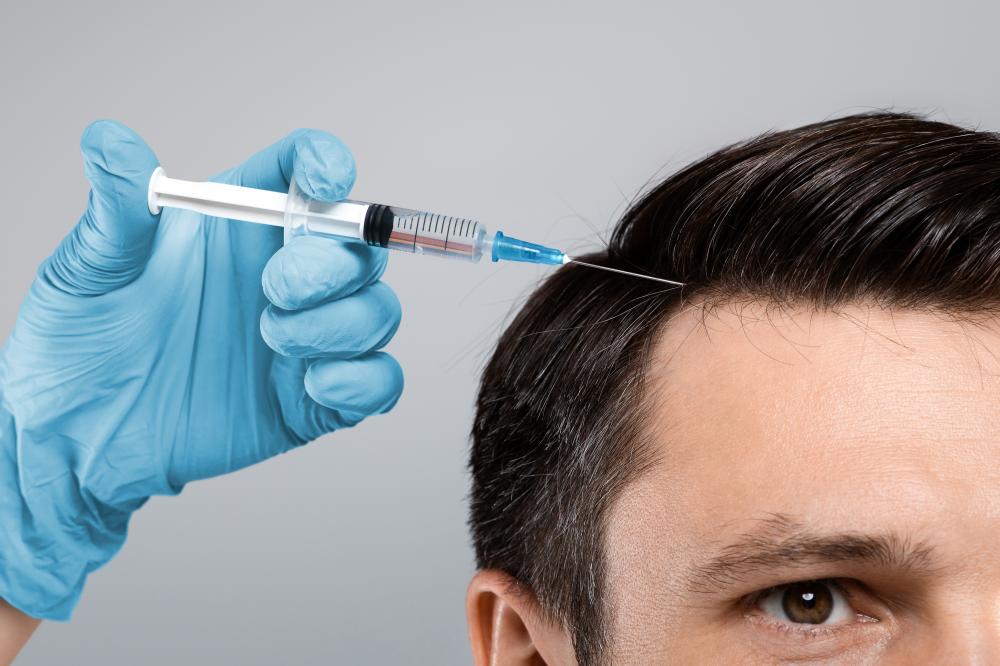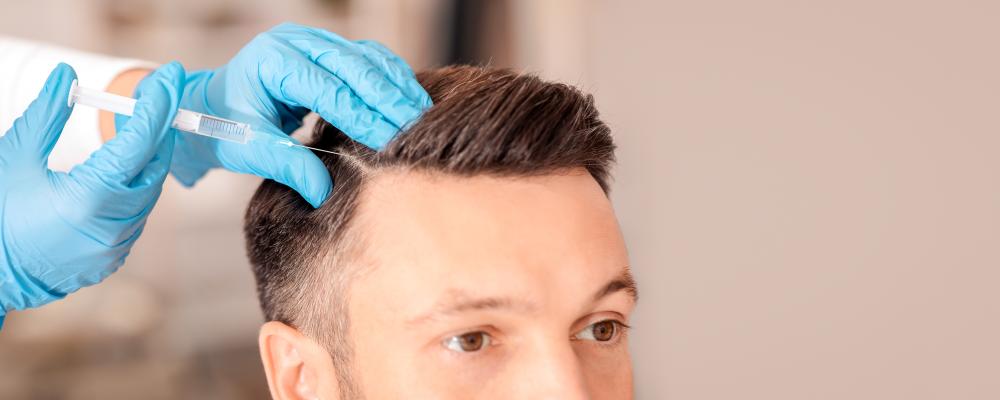Exploring Hair Restoration: Insights from the Industry
When it comes to hair restoration, the search for the right solution often begins with a deep dive into the options available. Hair Restoration Tampa offers a unique panorama of cutting-edge techniques and experienced professionals who are dedicated to helping you regain confidence. In my 20 years as a dermatologist, specializing in hair restoration procedures, I’ve witnessed the evolution of this field firsthand.
With advancements like the ARTAS® Robotic Hair Transplant System and NeoGraft®, Tampa is at the forefront of delivering minimally invasive solutions. These technologies provide patients with options that ensure natural-looking results, speedier recovery, and no linear scarring. As a leading expert, I have seen how these methods transform not just hairlines but lives.
What Techniques Dominate Hair Restoration Tampa?
Hair Restoration Tampa has adopted a variety of approaches to address hair loss, suitable for different stages and types of hair thinning. The Follicular Unit Transplantation (FUT) and Follicular Unit Extraction (FUE) are among the most traditional and effective techniques. They involve the transplantation of hair follicles from donor areas to balding spots, ensuring a natural look.
Meanwhile, non-surgical options such as Low Level Laser Therapy (LLLT) have gained popularity. These therapies stimulate hair growth and prevent further loss without incisions or medications. For many, the appeal lies in their non-invasiveness and convenience. Additionally, medications like finasteride and minoxidil remain popular for those seeking a pharmacological approach.
Are You a Candidate for Hair Restoration Tampa?
Determining if you’re a suitable candidate for hair restoration involves several considerations. Generally, individuals with pattern baldness or thinning hair are prime candidates. However, this depends on factors like the extent of hair loss, donor hair availability, and overall health.
-
Consult a specialist for a detailed scalp analysis.
-
Assess the quality and availability of donor hair.
-
Consider your medical history and any underlying conditions.
For those unsure, a consultation in Hair Restoration Tampa can offer personalized insights. Understanding your unique physiological profile is key to crafting a treatment plan tailored to your needs.
Every patient brings a unique story and set of challenges. I recall one memorable case of a young professional whose hair loss affected his confidence at work. Through a combination of FUE and laser therapy, we achieved remarkable results. Beyond aesthetics, his renewed confidence sparked thriving social and professional engagements.
For many, it’s the personal journey that resonates most. Another patient, who had long struggled with thinning hair, opted for non-surgical treatment and was delighted with both the process and outcome. Sharing these stories in Hair Restoration Tampa highlights the diverse paths to restoration and the profound impact they have on personal lives.
Step-by-Step: Navigating Your Journey in Hair Restoration Tampa
-
Initial Consultation: Schedule a meeting with a specialist to discuss goals and evaluate your situation.
-
Choose a Treatment: Based on the analysis, select the most appropriate hair restoration technique.
-
Preparation: Follow pre-procedure instructions, which may include dietary considerations or medication adjustments.
-
Procedure Day: Arrive at the clinic, where the procedure will be performed by trained professionals.
-
Post-Procedure Care: Adhere to aftercare guidelines to promote healing and optimal results.
What Are the Latest Advancements in Hair Restoration Tampa?
The industry continues to evolve rapidly, incorporating new technologies and methodologies. Regenerative medicine has become a focal point, with treatments like Platelet-Rich Plasma (PRP) offering promising results by stimulating dormant hair follicles.
Moreover, advancements in AI and robotic assistance are refining the precision and efficiency of transplant procedures, minimizing human error. These innovations ensure that Hair Restoration Tampa remains a leader in offering top-tier solutions with cutting-edge techniques.
As research continues and more breakthroughs are made, patients can expect even more effective and tailored solutions to their hair loss challenges.
What makes Tampa a leader in hair restoration?
Tampa has become a hub for hair restoration due to its combination of innovative techniques and highly skilled professionals. The use of advanced technologies such as ARTAS® Robotic Hair Transplant System and NeoGraft® allows clinicians to achieve natural-looking results with minimal downtime. These techniques reduce the risk of linear scarring and speed up recovery times. As a patient, you benefit from not only cutting-edge procedures but also the expertise of specialists who are continually updating their skills and adopting the latest practices in the field.
Think about it this way: having access to these technologies is like having the best tools for crafting a masterpiece. The expertise and passion of the professionals in Tampa ensure that every hair restoration case is approached with precision and care. If you have concerns about your hair loss and would like to explore options available in Tampa, what aspects of hair restoration would you like to learn more about?
How do I know if I’m a candidate for hair restoration?
Determining candidacy for hair restoration involves a few key factors. Generally, individuals with pattern baldness or those experiencing thinning hair are considered good candidates. However, it also depends on the availability of donor hair and your overall health. During your initial consultation, a hair restoration specialist will likely perform a detailed scalp analysis to assess the quality and quantity of your donor hair.
As an example, I once attended to a patient who was unsure about his eligibility due to having only recently noticed hair thinning. After a thorough consultation, we determined he had sufficient donor hair and was an excellent candidate for a Follicular Unit Extraction (FUE) procedure. This tailored approach is crucial in achieving optimal results. Would you be interested in learning about the various types of hair restoration techniques available?
Which hair restoration technique is right for me?
The right technique depends on several factors including the stage and type of your hair loss, your lifestyle, and personal preferences. Follicular Unit Transplantation (FUT) and Follicular Unit Extraction (FUE) are the most traditional methods, offering highly effective results. Non-surgical options like Low-Level Laser Therapy (LLLT) are ideal for those seeking a less invasive approach.
For instance, if you’re someone who wants a quick recovery period and is concerned about scarring, FUE might be the way to go. On the other hand, if your hair loss covers a larger area, FUT could be more suitable. Imagine it like choosing between different workout programs; each has its strengths depending on your fitness goals. What are your thoughts on blending different techniques to achieve the best results?
What are the latest innovations in hair restoration?
The field of hair restoration is evolving rapidly with innovations like Platelet-Rich Plasma (PRP) therapy and AI-guided robotic assistance leading the way. PRP involves using your blood’s platelets to stimulate hair growth, offering promising results for many patients. Meanwhile, AI technologies are enhancing the precision of hair transplant procedures, reducing human error, and improving overall outcomes.
Think of these advancements as adding new instruments to a skilled musician’s repertoire, allowing for more refined and harmonious performances. As further research and technological breakthroughs continue to emerge, the future of hair restoration looks exceptionally promising. Are you curious about how these techniques could be integrated into a personalized hair restoration plan for you?
Can real patient experiences help in choosing a hair restoration path?
Absolutely. Hearing first-hand accounts can provide valuable insights into the process, expectations, and satisfaction levels of different treatments. Many patients find that sharing their stories helps demystify the journey and prepare them for their own experiences. For example, one of my patients, a young professional affected by hair loss, regained confidence in the workplace after undergoing a combination of FUE and laser therapy.
These stories not only highlight the potential aesthetic benefits but also showcase the significant impact on personal and professional lives. Imagine reading a book where each page reveals a new chapter of transformation; patient stories are like that, offering a glimpse into the success and satisfaction that can be achieved. Would you be interested in learning more about individual experiences and how they relate to different hair restoration techniques?
How does the consultation process work for hair restoration?
The consultation process is an essential step in your hair restoration journey. It typically involves an initial meeting with a specialist who will evaluate your hair loss, discuss your goals, and perform a detailed scalp analysis. Based on this assessment, they’ll recommend the most appropriate treatment options and provide guidance on what to expect.
Consider it like mapping out a road trip; the consultation sets the path for the journey ahead, ensuring you’re aware of the stops and potential detours. This process is tailored to your specific needs and ensures that you make informed decisions about your treatment plan. Are there specific questions or concerns you have about what happens during a hair restoration consultation?

